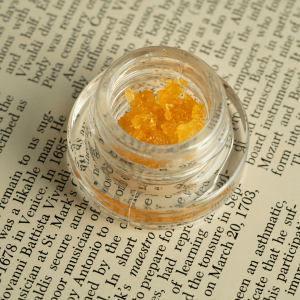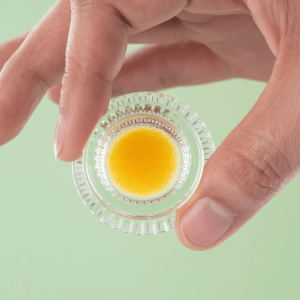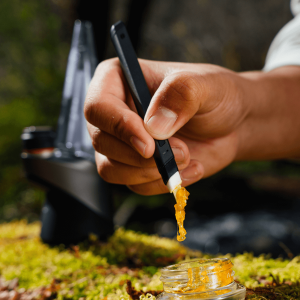In the ever-evolving cannabis industry, the pursuit of high-quality extracts has led to innovative processes designed to enhance product purity and even attractiveness. One such method is the Color Remediation Column (CRC), which plays a vital role in refining cannabis extracts by removing impurities that may detract from their visual appeal.
The aesthetic quality of CRC extracts significantly influences consumer perception and purchasing decisions, making CRC an essential tool for producers aiming to present flawless extracts. With an increasing emphasis on aesthetics in the cannabis market, understanding the intricacies of CRC wax becomes essential.
This blog will explain the mechanics of the CRC process, discuss the benefits and potential drawbacks of using CRC wax, examine its effect on cannabinoid profiles, and share best practices for effectively using this technique in cannabis extraction. By the end, you will understand how CRC treatment enhances the quality of cannabis products.
What is CRC Wax?
CRC wax refers to cannabis extracts that have undergone Color Remediation Column (CRC) processing, a technique aimed at refining the purity and appearance of final products like butane hash oil.
This method involves passing the cannabis concentrates through a column containing adsorbent materials, commonly activated alumina or silica gel, which trap unwanted pigments and impurities, resulting in a cleaner and visually appealing wax. The CRC process functions by utilizing solvents, such as butane or propane, to first dissolve the cannabinoids, terpenes, and other desired compounds in the cannabis plant material. Once the extraction is complete, the resulting solution is then subjected to filtration through the CRC column.
One significant difference between CRC wax and traditional cannabis extracts is the enhancement in visual aesthetics; CRC wax typically exhibits a lighter color and transparency compared to its non-CRC counterparts. While traditional extracts may appear darker and retain more impurities, CRC processes produce a product that not only looks appealing but also aligns with consumer expectations for high-quality cannabis.
Additionally, the solvents used in the CRC process play a crucial role, as they need to be properly managed to maintain a desirable cannabinoid profile while filtering out unwanted materials. Overall, the CRC technique represents a step forward in the refinement of cannabis extracts, providing producers with a way to offer top-tier products that captivate discerning consumers.

Benefits of Using CRC Wax
The use of CRC wax in the cannabis industry offers various advantages that cater to both producers and consumers. Here are some of the key benefits:
- Purity: One of the primary advantages of CRC wax is its ability to remove contaminants and impurities from cannabis extracts. The filtration process effectively traps unwanted materials, leading to a cleaner final product that exemplifies high quality and safety. This heightened purity not only aligns with health standards but also fosters consumer confidence in the product.
- Enhanced Visual Appeal: CRC wax is known for its vibrant colors and clarity. The aesthetic transformation that occurs during the CRC process results in a visually striking product that often commands higher prices in the market. This enhanced visual appeal is crucial in a competitive industry where presentation can heavily influence purchasing decisions.
- Improved Flavor Profile: The CRC process not only purifies but can also positively affect the flavor profile of the extract. By carefully managing the solvents used, producers can retain or even enhance specific terpenes and cannabinoids that contribute to the unique taste and aroma of the product. This refinement can lead to a richer and more enjoyable consumer experience.
- Consistency in Product Quality: The standardization that comes with using CRC wax helps ensure that consumers receive a consistent product. By implementing CRC techniques, producers can replicate the quality and appearance of their extracts more reliably. This consistency is essential for building brand loyalty in an industry where consumer expectations are continually rising.
By leveraging these benefits, CRC wax producers can deliver products that not only meet but exceed customer expectations, thereby positioning themselves as leaders in the cannabis market.

The Process of Making CRC Wax
Creating CRC wax involves a meticulous process that ensures purity and aesthetic appeal while prioritizing safety and efficiency. Here’s a step-by-step guide on the CRC extraction process:
Preparation:
Start by gathering the necessary materials and equipment. You will need high-quality cannabis flower, a suitable solvent (such as butane or propane), a color remediation column filled with adsorbent material (typically activated alumina or silica gel), a vacuum oven for purging, and safety equipment including gloves, goggles, and a lab coat.
Extraction:
Place the prepared cannabis material into a specialized extraction vessel specific to CRC technology. Introduce the solvent, which will dissolve the cannabinoids, terpenes, and other desirable compounds from the cannabis. This mixture is then left to soak for a specific duration to maximize extraction efficiency.
Filtration through CRC Column:
Once extraction is complete, the solution is carefully filtered through the CRC column. The adsorbent materials will capture unwanted pigments and impurities, allowing only the refined extract to pass through. This step is crucial for achieving the visual purity desired in CRC wax.
Collection:
The purified extract can be collected in a separate container.
Purging:
To remove any residual solvent, the extract is transferred to a vacuum oven where it is purged under controlled conditions. Maintaining the correct temperature and time during purging is critical for preserving the quality of the cannabinoids and terpenes.
Safety Protocols and Best Practices
Throughout the CRC wax production process, adhering to strict safety protocols is paramount. Always work in a well-ventilated area, utilize appropriate PPE, and follow proper procedures when handling solvents to minimize risks.
Regularly check equipment for malfunctions, and ensure that you are working with certified materials to prevent contamination. By being vigilant about safety and best practices, producers can achieve high-quality CRC wax while safeguarding their health and that of others involved in the process.

Common Misconceptions and Controversies
Despite its growing popularity, there are several misconceptions and controversies surrounding CRC wax that merit discussion. One prevalent myth is that the CRC process adversely affects potency. However, when performed correctly, CRC techniques can actually enhance the preservation of cannabinoids and terpenes, leading to a product that maintains, if not improves, its potency and flavor profile.
Concerns about safety have also arisen, with some consumers questioning the use of solvents and their potential contaminants. It is essential to recognize that reputable producers implement stringent quality controls and adhere to health and safety regulations to mitigate these risks, ensuring that the end product is both safe and high-quality.
Industry opinions on CRC wax are varied; while many producers applaud the technique for its ability to produce visually appealing and pure extracts, others argue that it may lead to an overemphasis on aesthetics at the expense of full-spectrum properties. This debate often brings to light the need for consumer education, as many still lack awareness about the extraction processes and their implications.
Regulatory perspectives are also evolving, with agencies beginning to evaluate the safety and efficacy of CRC processes and CRC media contamination within the broader cannabis marketplace. As regulations tighten and consumer awareness grows, it is crucial for producers to remain transparent about their methods and educate their customers, dispelling myths and promoting informed choices regarding CRC wax and its applications in cannabis products.
Conclusion
In summary, CRC wax represents a significant advancement in the cannabis industry, offering enhanced visual appearance, improved flavor profiles, and consistent product quality that meet evolving consumer expectations.
As the extraction process continues to develop, we can anticipate future innovations that further refine CRC techniques, potentially incorporating new technologies and sustainable practices. For consumers, exploring CRC products mindfully is essential; understanding the benefits and misconceptions surrounding these extracts will empower informed choices.
By appreciating the craftsmanship behind CRC wax, consumers can enhance their experience and support producers committed to quality and transparency in the ever-evolving cannabis landscape. Needless to say, CRC tech stands as an excellent solution for improving cannabis concentrates.

Frequently Asked Questions
1. How do you tell if your dabs are CRC?
Identifying CRC wax can often be achieved by examining its appearance and texture. CRC products are typically characterized by a clear, visually appealing finish with vibrant colors, suggesting that impurities have been effectively removed. Additionally, the consistency may be more stable and less sticky compared to non-CRC dabs. If you’re unsure, purchasing from reputable sources that provide lab testing results can ensure the quality and authenticity of the product.
2. Is CRC safe to smoke?
Yes, CRC wax is safe to smoke when produced by reputable manufacturers who follow stringent safety protocols and quality control measures. These producers ensure that all residual solvents are adequately purged and that the final product meets health and safety regulations. It’s crucial for consumers to verify the legitimacy of the producer and seek out products that have been lab-tested for contaminants.
3. What does CRC stand for in concentrates?
CRC stands for Color Remediation Column. This term refers to the process and the equipment used to refine cannabis extracts, specifically designed to remove unwanted pigments and impurities, resulting in a more visually pleasing and pure product.
4. Does CRC remove Terps?
The CRC process can affect the terpene profile of the concentrate, but when executed correctly, it should not completely eliminate them. In fact, skilled producers can enhance the preservation of cannabinoids and terpenes, resulting in a product that maintains, or even improves, its aromatic and flavor characteristics. It’s essential for consumers to choose products from producers who are knowledgeable about terpene preservation during the CRC process.

 Rewards
Rewards




